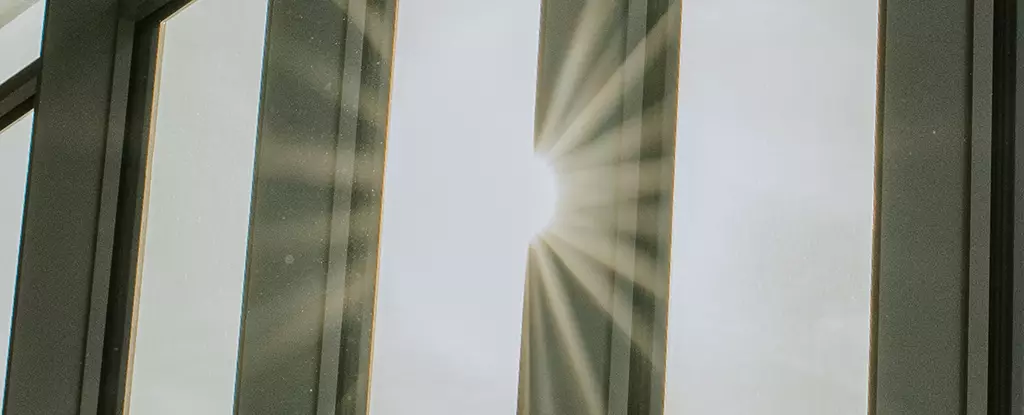In recent years, technological advancements have promised a greener future through innovative solutions that blend seamlessly into our daily environments. Among these, the idea of turning ordinary windows into energy-generating surfaces has gained significant attention. A new development from Nanjing University—an ultra-clear coating capable of transforming any window into a solar panel—appears to be a potential game-changer. At first glance, the technology seems almost too good to be true: transparent, aesthetic, and scalable. But beneath this glossy veneer lies a sobering reality that demands closer scrutiny. Promising as it may sound, the current iteration of this technology is riddled with fundamental flaws that threaten to turn it into another overhyped gimmick rather than a practical solution.
Overestimating the Promise of Innovation
The allure of a “clear” solar coating that preserves window transparency while actively generating power naturally captures imagination. But the critical question is whether this innovation can live up to its lofty claims. The technology, based on cholesteric liquid crystals (CLCs), can supposedly capture a significant portion of sunlight, directing some photons toward photovoltaic cells while letting the rest pass through. Yet, the efficiency figures are underwhelming: an overall maximum of 18.1% under ideal conditions, with a meager 3.7% of solar energy converted into usable electricity. For context, traditional solar panels already operate at efficiencies exceeding 20%, and many commercially available options today surpass 22%. Thus, this coating’s performance pales in comparison, calling into question its real-world viability.
The Myth of Aesthetic and Functional Compatibility
Proponents argue that this coating preserves the aesthetic integrity of windows—a crucial factor for real-world adoption, especially in urban environments. However, aesthetic appeal alone does not guarantee practical utility. The coating’s transparency of 64.2% suggests that nearly one-third of visible light is still being blocked or scattered—a non-trivial loss for a feature that aims to be seamlessly integrated into everyday life. Furthermore, the color fidelity of 91.3% indicates only a minor compromise, but it’s essential to consider long-term durability and consistency, aspects that remain unexplored in preliminary testing. Without rigorous assessment of how these coatings perform over years of exposure to weather, pollution, and temperature fluctuations, their initial allure quickly diminishes.
Technological Hype Versus Real-World Impact
The developers’ optimistic narrative of scalable, commercially viable solar windows often masks the stark reality: this technology is still in its infancy. Laboratory prototypes that generate enough energy to power a small fan are promising, but translating this into full-size windows capable of significant energy contribution is vastly more complicated. Scaling up involves more than enlarging the coating; it requires a reliable manufacturing process, long-term stability, and cost-effective deployment. Currently, the efficiency gap is wide—most of the incoming solar energy barely makes it into usable electricity—and the overall energy yield from such coatings remains marginal compared to established technologies. Advocates must confront the inconvenient truth that this innovation, in its present form, appears more aspirational than practical.
Environmental and Economic Realities
At first glance, this technology appears to align with progressive environmental goals, promising a low-impact method of energy generation. However, the environmental benefits are dubious when considering the entire lifecycle of the coating—production, application, maintenance, and eventual disposal—aspects seldom addressed in such optimistic claims. Moreover, the cost of developing, manufacturing, and deploying these coatings at scale could far outweigh their benefits, especially when their efficiency is dismal compared to traditional solar options. For policymakers and consumers genuinely committed to a sustainable future, relying on such unproven and inefficient technologies risks diverting resources from more effective solutions—like expanding urban solar farms or investing in energy storage innovations.
An Unfulfilled Promise in the Making
While the research teams are right to pursue innovative ways to seamlessly integrate solar technology into our urban fabric, the current state of this coating suggests an overhyped breakthrough that has yet to prove itself. The narrative of a future where windows contribute meaningfully to green energy remains alluring, but it’s essential to temper enthusiasm with realism. This development, at best, offers a hint of potential—an early step rather than a definitive leap. Until significant improvements target efficiency, durability, and economic viability, this supposed breakthrough risks becoming just another example of technological optimism overshadowing practical reality.


Leave a Reply